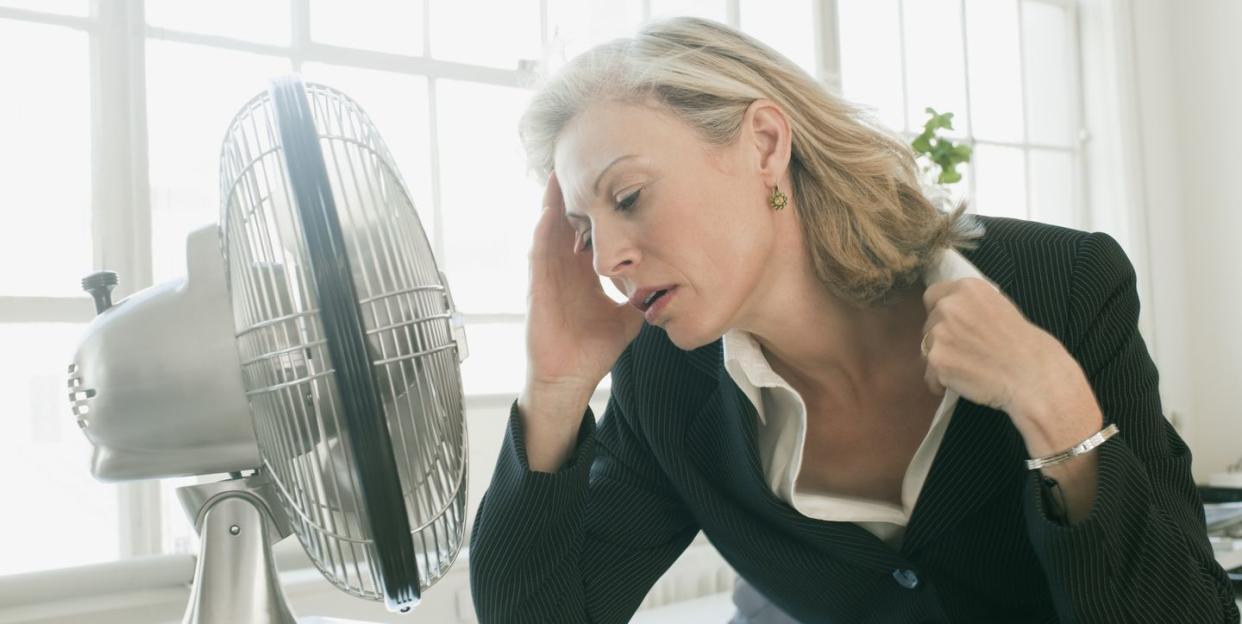Menopause and VMS by the Numbers

Considering the fact that every woman on earth who lives long enough goes through menopause, it’s astounding that the subject is still so hush-hush. Fortunately, medical researchers are devoting more attention to menopause and its effects, including vasomotor symptoms (VMS), the medical term for hot flashes and night sweats.
That’s thanks, in part, to the Study of Women’s Health Across the Nation, widely referred to as the SWAN, which began in 1994 and continues to follow nearly 3,300 women in the U.S. as they age. It has provided researchers with more data about how women’s mid-life experiences affect their health and quality of life than we’ve ever had before. Below are some of the most surprising stats about menopause and VMS that have come out of the SWAN study as well as other current research.
40: The decade when it begins
We used to believe that women only experienced symptoms for a couple of years prior to menopause (which is marked after 12 consecutive months of no period). Now we know that many women begin having symptoms such as hot flashes up to 10 years (or sometimes more) prior to menopause. With the average age of menopause in the U.S. being 51, that means a lot of women begin experiencing perimenopause (the period of time leading up to menopause) and the symptoms it brings, including VMS, in their early 40s — much sooner than experts previously thought.
“Researchers still don’t know exactly what causes hot flashes and why some women experience them earlier or later than others, or why some women have more severe symptoms than others,” says Anna Cabeca, DO, an OB-GYN known as “The Girlfriend Doctor” and author of the book MenuPause. “Hormone changes during menopause are thought to be part of the answer, but hormone changes alone don’t fully explain the variations in women’s hot flashes. There appear to be many reasons and factors as to why some women have more hot flashes and some less”—including, for example, genetics and lifestyle factors.
>80%: Proportion of women who have hot flashes
It’s no wonder hot flashes are the hallmark symptom of the menopause transition, considering more than 80% of women report experiencing them during perimenopause and beyond. But while “most women report at some point experiencing hot flashes, there’s a wide range of experiences in the population,” says Siobán D. Harlow, PhD, a professor of epidemiology and global public health in Michigan and one of the SWAN study investigators. “Many women will have hot flashes that aren’t terribly bothersome and have them for a relatively short period of time, while other women will experience severe hot flashes multiple times a day for quite a long period of time.”
For women who do have intense hot flashes and night sweats (which are simply hot flashes that occur during sleep), the worst part is often the unpredictability. “Hot flashes tend to come out of the blue without warning,” Dr. Cabeca says. “A feeling of intense heat comes over a woman, and her face can become red and flushed. She may sweat profusely, and many women report a feeling of anxiety either before or during the hot flash. It can be incredibly uncomfortable, and a woman may want to literally strip off her layers of clothing [to cool off].”
33: Average number of hot flashes per week
Hot flashes are not infrequent. According to one UK study, women who seek care for VMS have an average of 33 hot flashes per week — that’s nearly five per day (or night). With that kind of relentlessness, “it’s important not to trivialize vasomotor symptoms, particularly when they’re severe and/or frequent,” Dr. Harlow says. “Saying they’re ‘bothersome’ makes them sound less disruptive than they really are, especially if they’re interfering with one’s sleep or quality of life.”
⅔: Fraction of women who report VMS-related mood changes
Considering how disruptive VMS can be, it’s no wonder that one VMS questionnaire found that more than two-thirds (69%) of women say hot flashes interfere with their mood and 63% say hot flashes affect their energy levels. And then, of course, there’s the cringe factor. “Hot flashes can impact the quality of a woman’s life,” says Dr. Cabeca. “They can cause embarrassment — nothing like a good hot flash while you’re at work! — and they can make sleep challenging. Poor sleep means poor energy, poor brain function, and more.”
2: Types of medication available
There’s no need to white-knuckle through VMS or other menopause-related symptoms. If they are interfering with your quality of life, don’t hesitate to talk to your doctor about it. There are two types of prescription medications available to treat menopause symptoms: hormonal and non-hormonal.
If hormone therapy is unappealing to you, ask your provider about non-hormonal options. “[VMS is] one of the few clear-cut indications for hormone replacement therapy, but there are also non-hormonal prescription medications that can significantly reduce hot flashes,” says Sherri-Ann Burnett-Bowie, M.D., an assistant professor of medicine in Cambridge, Mass and one of the principal investigators for the SWAN study.
Your best bet is to work with a provider who’s well-versed in menopause to find the therapy that works for you. You can search for a North American Menopause Society-certified menopause practitioner at menopause.org.
20%: Decreased likelihood of hot flashes with a healthy diet
Significant evidence shows that VMS can be reduced by diet and exercise. Participants who followed a Mediterranean diet during a study published in the American Journal of Clinical Nutrition were 20% less likely to have hot flashes than women who didn’t. While there’s less research on how effective exercise is at reducing VMS, a 2019 study out of Sweden found a positive association between resistance training exercise and VMS relief. And what better time to break out a sweat than during a workout?
You Might Also Like

